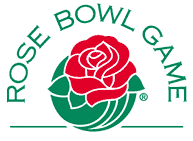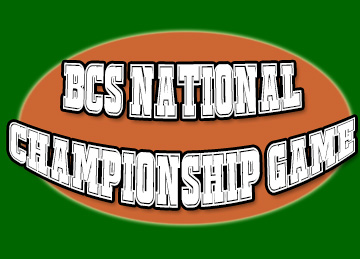the rose bowl game


The Rose Bowl Game
Date: January 2, 2017
Venue: Rose Bowl
Location: Pasadena, CA
The Granddaddy of Them All this New Year's Day. A college
football classic, the
2017 Rose Bowl Props are sure to feature an
exciting match-up from the Pac-10 and Big-10 Conference
Champions.
Held on New Year's Day
since 1923 at the Rose Bowl Stadium, the Rose Bowl is
the oldest college football bowl game in American
history.
The Rose Bowl will be
broadcast exclusively on ABC and on ESPN radio.
In the current
BCS format, four bowl games and the National Championship
Game are considered "BCS bowl games". The four bowl games
are the
Rose Bowl Game in Pasadena,
the Sugar Bowl New Orleans, the Fiesta Bowl in
Glendale, Arizona, and the Orange Bowl in Miami.
ROSE BOWL COLLEGE FOOTBALL CLASSIC HISTORY
In 1902, the Tournament of Roses Association decided
to enhance the day's festivities by adding a
football game. Stanford University accepted the
invitation to take on the powerhouse University of
Michigan, but the west coast team was flattened 49-0
and gave up in the third quarter. The lopsided score
prompted the Tournament to give up football in favor
of Roman-style chariot races.
In 1916, football returned to stay and the crowds
soon outgrew the stands in Tournament Park. William
L. Leishman, the Tournament's 1920 President,
envisioned a stadium similar to the Yale Bowl, the
first great modern football stadium. He enlisted the
help of architect Myron Hunt and builder William A
Taylor, and together they made plans for a stadium
in Pasadena's Arroyo Seco area.
The original stadium, a 57,000-seat horseshoe open
on the south end, cost $272,198.26. The Tournament
financed the project by offering ten-year
subscription tickets for $100 each. Once it was
completed, it was deeded to the city of Pasadena.
Local newspaper reporter Harlan "Dusty" Hall, who
also served as the Tournament's press agent, came up
with the name "Rose Bowl" for the stadium, and on
January 1, 1923, the Tournament held its first
football game there.
The stadium grew with the Rose Bowl Game's
popularity. In 1928, the south end was filled in,
increasing the seating capacity to 76,000. Further
enlargements took place in 1932 (83,677), 1949
(100,807) and 1972 (104,696). The current seating
capacity is approximately 93,000, although stadium
room was found for a record crowd of 106,869 on
January 1, 1973.
The Rose Bowl Stadium has been the site of many
"famous firsts" throughout its history, including
the first wirephoto transmission of a bowl game (in
1925), the first transcontinental radio broadcast of
a sporting event (in 1927, on NBC), the first Los
Angeles telecast of a college football game (in
1948, on KTLA), the first national telecast of a
college football game (in 1952, on NBC), the first
coast-to-coast color telecast of a college football
game (in 1962, on NBC), the first satellite
television broadcast to Europe of a college football
game (1968), and the first live satellite telecast
of a bowl game to the Far East (in 1978). The first
live Spanish-language broadcast of the game took
place in 1988, and in 1989, the Tournament of Roses
celebrated the Rose Bowl Game's 75th anniversary.
Nicknamed "The Granddaddy of Them All" the Rose Bowl
Game has been a sellout attraction every year since
1947. That year's contest was the first game played
under the Tournament's exclusive agreement with the
Big Ten and Pacific Coast Conferences. (The Pacific
Coast Conference's name was changed to Pacific-8 in
1968, and to Pacific-l0 in 1978.) Ever since the
agreement was signed, the Rose Bowl Game has
featured the championship teams of the two
conferences. The 1998 Rose Bowl Game was the 52nd
anniversary of that agreement, the longest standing
tradition of any collegiate conference and a bowl
association.
Following the 1998 regular season Big Ten and Pac-10
Teams will be eligible to compete for the national
championship in an arrangement with the Bowl
Championship Series. The Rose Bowl hosted the
National Championship Game in 2002.
ROSE BOWL STADIUM


|




